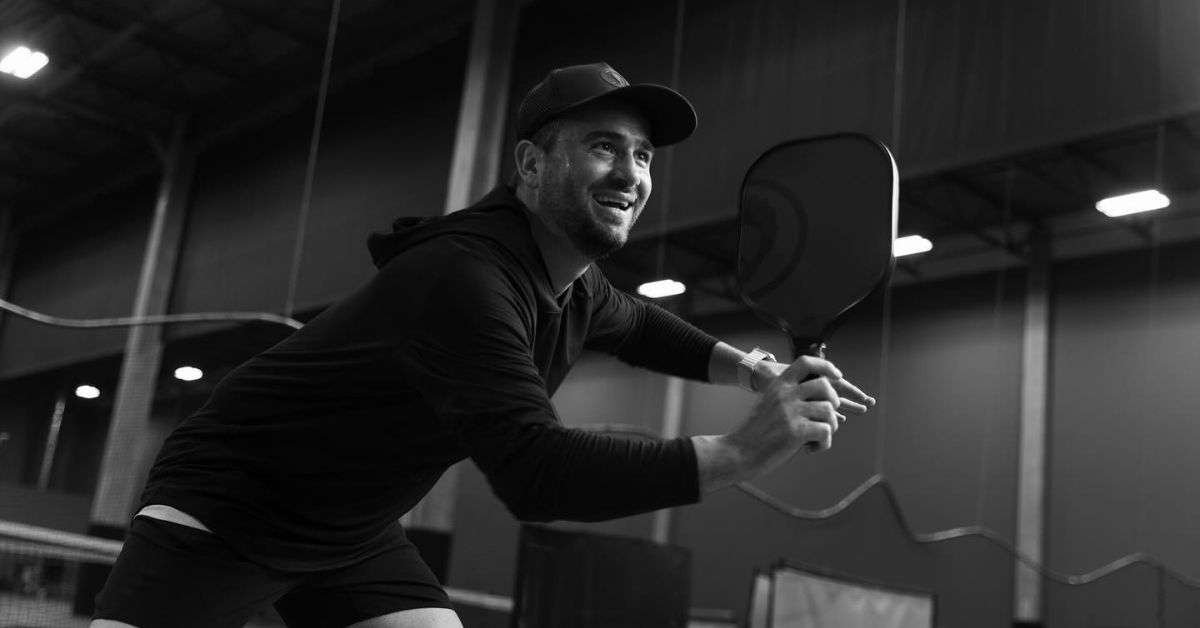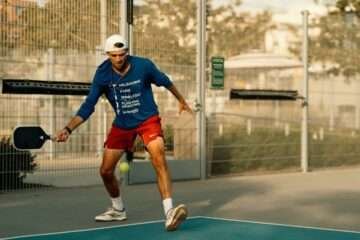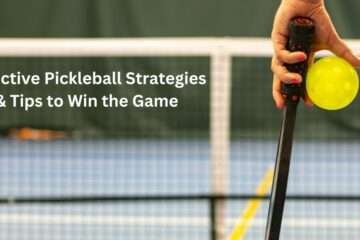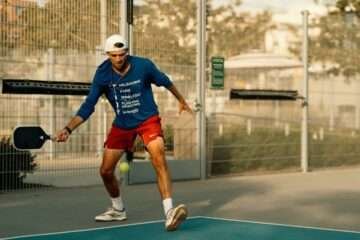if you are an intermediate pickleball player with a 3.0-3.9 range and want to break into those upper-echelon levels you need to ramp up your skills all while keeping an eye on what’s working in modern games and where things are headed. Intermediate players are urged to focus more on vital abilities in-game. Beginners don’t pay attention to these tips, but intermediate players must constantly rinse and repeat to advance their game.
You can also check out my beginner and advanced pickleball tips and strategies as well. And you should definitely read my post on how to start playing pickleball.
5 Pickleball Tips for Intermediate Players
In order to work your way through the intermediate skill level of a pickleball player, the number one tip you should focus on to get there is your soft game. Here are what I believe to be the 5 most important aspects of the soft game you can work on to raise your game to the next level.
Tip #1: Dinks
The majority of players that make it to the intermediate level do so by developing a lower dink in their game. Work on keeping your dinks low and in the kitchen, and consequently be prepared to dink for longer. One thing that I’ve personally noticed during my pickleball journey is that the higher the level I play, the longer the dink rallies are, and the lower (less attackable) the dinks. Under the 4.0 level, it’s common for points to have only a handful of dinks before one is popped up and attacked. Above the 4.0 level, dink rallies tend to be longer before someone hits a high ball to attack. At the 5.0-pro level, players rely on them to keep from being attacked, and to create offensive opportunities because it’s rare that dinks are popped up for no reason. Hence why pros sometimes attack low balls if they see an opportunity in their opponents’ positioning (open window, hands down, etc), in which case the defensive reset becomes important to restart the dink rally.
Tip #2: Drop
Players in the 3.0-3.9 level tend to love the drive. (So do I, I love to drive!) At the intermediate levels, returners are able to take away that option by hitting deep, low returns that barely bounce above your knees. You can essentially drop any return, no matter how low and deep it is, and this will prevent you from being attacked. 4.0+ players almost always get established at the kitchen line off the third, and with a good drop, you are more likely to get all the way up there. You must do this well to progress through the intermediate levels of pickleball.
Tip #3: Reset
At the intermediate level, the margin of error is almost nothing. Learn how to put the ball in the kitchen when you are in trouble. Also, if you are in transition or out of position, reset unless the ball is well above your shoulder. Many 3.0-4.0 players will attack anything that they can volley. Attacking when not in position will either cause an error or make the next shot harder. High-level players are able to reset their way through the transition zone, and reset when being attacked, making it harder to score points against them.
Tip #4: Consistency
Focus on developing consistency in your fundamentals. The, serves, returns, and particularly third shots, are essential weapons for intermediate-level play. One of the biggest differences between 3.0 and 3.5 players is that 3.5 players hit their serves and return consistently, and their third shots are usually in. That isn’t to say that their shots are all perfect (especially the third shot), but they can play at a much higher level of overall consistency than 3.0-level players. Don’t worry too much about hitting perfect drops, drive winners, or huge serves and returns. Just focus on getting your shots in and getting the point going. Once you develop this level of consistency you can begin to work on strategy and advanced shot making, but the first step is consistency!
You may like to read, Onix Z5 Graphite Pickleball Paddle Review
Tip #5: Learn wrist lag
Wrist lag is when the wrist bends behind the forearm so that the paddle appears to “lag” behind the rest of the motion (see the first image for an example). Wrist lag is one of the ways that the pros are able to effortlessly generate massive amounts of power and spin from compact swings. Today’s tip is going to go over how wrist lag works, why you should learn it, and how you should learn it.
How It Works
The wrist acts like a slingshot in pickleball swings, meaning the farther it is pulled back, the faster it will snap forward. You can test this mechanic by yourself without the ball to get an idea of how it works. Hold your paddle in your hand as if you are gripping a forehand, and pull the tip of the paddle back as far as you can. Relax your wrist and watch how it automatically snaps back forward. Now, try to keep your wrist bent back all the way after you let go of the paddle, and notice that it will still come back forward.
Intermediate or high-level players use this “slingshot” characteristic of the wrist in order to generate more paddle head speed. It will actually cause the paddle to move faster than the arm itself, translating to increased power and spin. The player gets some help from inertia to execute this mechanic. At the end of the backswing, the player changes direction of the swing from back to forward towards the ball. Physics dictates that the paddle will not want to change its course of motion and move forward after moving back, so if the wrist is relaxed when the player thrusts their arm forward, the paddle will lag behind the motion, pulling the wrist back. Because the wrist was pulled back, it will snap forward right before contact, generating a ton of paddle head speed. This allows you to generate tons of power and spin while staying relaxed and using a compact swing, rather than muscling the ball.
Why You Should Learn It
In order to make contact out in front of your body AND get the ball to go straight, your wrist must be lagged. If you’re an intermediate player, you probably already lag your wrist on serves, drives, and dinks without even realizing it. That being said, understanding the mechanic can help you maximize its potential even if you already do it to an extent. Hitting the ball out in front puts you in a powerful position, where you’re poised to hit the ball with optimal power and control. This allows you to lean into the shot and use forward momentum. If you hit the ball without wrist lag (so behind your body) your weight transfer will be neutral at best, or moving backward at worst.
Wrist lag also allows you to get optimal power and spin because of the snap that the wrist generates after it is pulled back. The snap causes the paddle to move faster than the arm, and paddle speed always translates to power and spin. Which you will get more of depends on the swing path.
How to Learn It
I always recommend to my students that they start by intentionally lagging the paddle before the shot by getting the butt cap to point toward the net. Callie Jo Smith does a really good job of this on her serve and forehand drive (see video). She clearly lags her wrist with intention.
The next step is to make sure that your wrist is fully relaxed. For your wrist to be able to snap through the ball with maximum efficiency it needs to be loose. A locked wrist won’t be able to generate as much paddle speed as a loose wrist.
Lastly, try to get the paddle parallel to the baseline during the backswing. This will give the wrist more room to lag behind when you start to swing forward to the ball.
Also read, Head Radical Elite Pickleball Paddle Review




